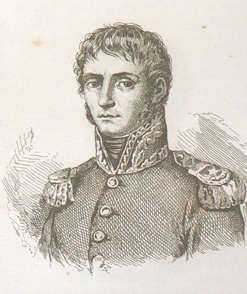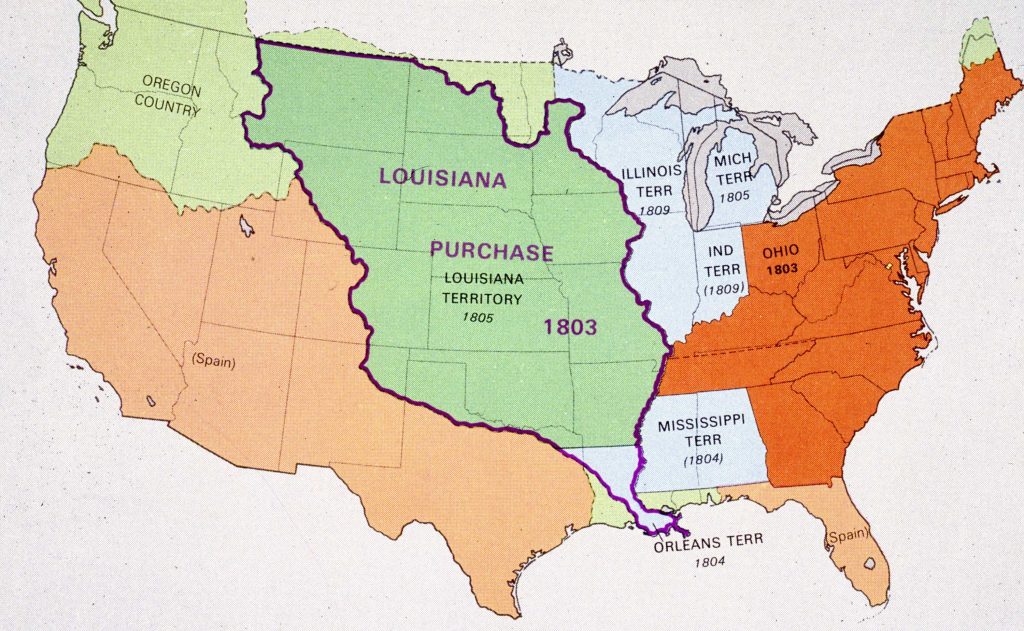The Haitian struggle against Napoleonic France enabled the twenty-one year-old United States to expand past the Mississippi River to the Rocky Mountains.
The French
sugar colony of Sainte Domingue generated wealth for the plantation owners and
the mother country, sugar then being a source of wealth rather like oil today. Most
of the population were Africans, enslaved on sugar plantations. It took an
average of 11 years to work a slave to death in the sugar fields. The dead were
replenished from the trans-Atlantic slave trade.
The
French Revolution broke out in 1789. Disorder soon spread to Sainte Domingue. Fighting
broke out between the Grand Blancs (“big whites”, wealthy planters) and the
Petit Blancs (“little whites”, poorer folks). It seems not to have occurred to
them that killing each other while hollering about liberty might make an
impression on the enslaved masses. In 1791 the enslaved rebelled, burning
plantations and murdering owners. Retaliation was swift and brutal.
Toussaint
Louverture rose to lead the Africans. Despite laws against educating the
enslaved, he was literate and educated. The Haitian Revolution was extremely complex.
Toussaint aimed at abolition and independence for his people. At various times he
allied with the British, the Spanish and in time the French, after the French
National Convention abolished slavery.
In
1800 Napoleon Bonaparte overthrew the French government and established himself
as the First Consul of France, later promoting himself to Emperor. Sainte
Domingue had been a major source of income for France. The French planters who
had fled from the island wanted their plantations and wealth back. Napoleon’s
wife Josephine, born into a wealthy planter family, agreed. Toussaint wasn't properly subordinate to Napoleon.
There
was a brief halt to wars that raged
between France and most of the rest of Europe from 1792 to 1800. Napoleon was
finagling the claim to the huge Louisiana territories from Spain. He had an
audacious idea (as most of his were). A truce with the British allowed Napoleon
to send ships across the Atlantic without fear of the British Navy. He would send 23,000 veteran soldiers under
his brother-in-law Charles LeClerc to subdue the Haitians, reestablish the slavery-powered
sugar plantations, start the flow of wealth again and please his wife. Then
LeClerc would take most of his army to New Orleans and cement the French claim
to an empire in the New World. This, when the US Army had just over 3,000
troops and the French Army was the terror of Europe.
LeClerc
landed in Haiti in 1802 and soon forced the Haitians to accept French dominion. Toussaint was offered safe
passage to negotiate. It was a lie. Toussaint was seized and sent to prison in
France where he starved to death under interrogation. Fighting broke out again
in Haiti when slavery was reestablished in Guadeloupe. Facing re-enslavement,
the Haitians fought with fury. European forces in the Caribbean had to win
rapidly, before Yellow Fever took hold. Two British armies had been decimated
by the disease in previous wars. As the fighting dragged on, the disease infected
the French. LeClerc and much of his army died. The survivors were too sick to
fight effectively. In 1803 they surrendered and took ship back to France.
There’s
no way to know if Haiti would have developed more fruitfully under Toussaint.
It is clear what path it followed under the illiterate and brutal Dessalines.
The
Haitian Revolution was extremely bloody and as savage as the revolution in
France, possibly worse. The planters who fled to the southern states of the US
brought harrowing tales of atrocity with them. The planters of the south, fearing
such a fate, passed draconian laws against rebel slaves.
Napoleon’s
New World army was virtually destroyed. Renewed war with Britain loomed. The
British way of war was to snap up the overseas colonies of their enemies, covered
by the large and fearsome Royal Navy. Without a serious French army, taking Louisiana
should be a piece of cake.
Instead, Napoleon sold it to the US a few weeks after the swap with Spain became public. This enraged the Spanish, who feared (rightly) that the Yankees were after much of the rest of New Spain’s territories. The British refused to recognize the legality of the Louisiana Purchase. Their refusal was rendered moot in early 1815 by Jackson’s crushing victory at New Orleans. (See my earlier post here. )
To
avoid being robbed by the British, Napoleon sold us the keys to the continent for 15
million dollars (perhaps 350 million in 2023 dollars, still quite a bargain).
If the Haitians had rolled over, we would instead have faced a tough, competent
French army in New Orleans, one that easily outnumbered Jefferson’s tiny army,
sitting on our western border at the Mississippi River. The tough fight of the
Haitian people back in 1802 and 1803 put an end to that possibility, with some
help from mosquitos.


